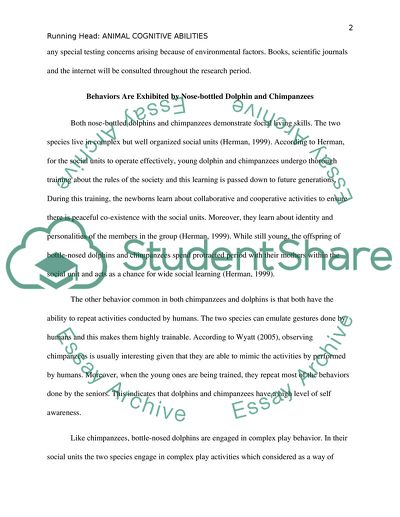Cite this document
(“Comparison of Communication and Cognitive Abilities of the Research Paper - 1”, n.d.)
Retrieved from https://studentshare.org/biology/1449599-comparison-of-communication-and-cognitive-abilities-of-the-bottle-nosed-dolphin-vs-the-chimpanzee
Retrieved from https://studentshare.org/biology/1449599-comparison-of-communication-and-cognitive-abilities-of-the-bottle-nosed-dolphin-vs-the-chimpanzee
(Comparison of Communication and Cognitive Abilities of the Research Paper - 1)
https://studentshare.org/biology/1449599-comparison-of-communication-and-cognitive-abilities-of-the-bottle-nosed-dolphin-vs-the-chimpanzee.
https://studentshare.org/biology/1449599-comparison-of-communication-and-cognitive-abilities-of-the-bottle-nosed-dolphin-vs-the-chimpanzee.
“Comparison of Communication and Cognitive Abilities of the Research Paper - 1”, n.d. https://studentshare.org/biology/1449599-comparison-of-communication-and-cognitive-abilities-of-the-bottle-nosed-dolphin-vs-the-chimpanzee.


